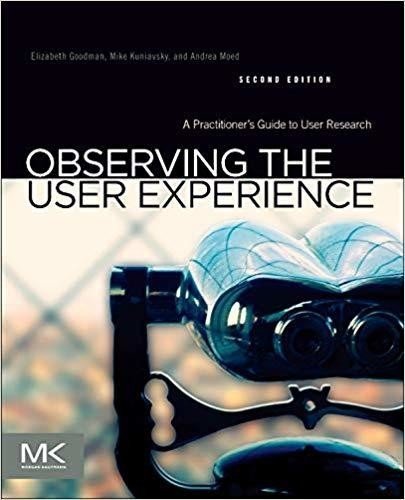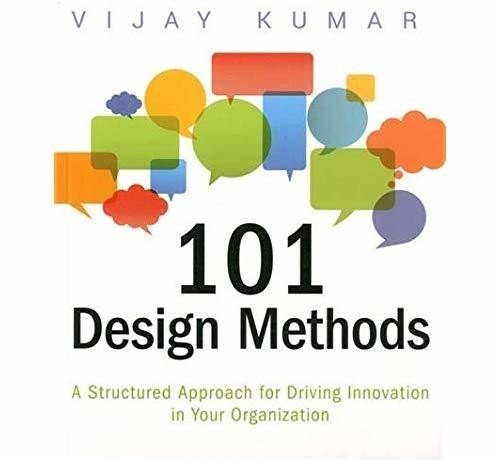
デザインスクールの履修科目 (2019秋学期)
秋学期の前半戦が終わりました (8月中旬から約1.5ヶ月)。今週の一週間は中休みです。宿題があるので完全には気を抜くことができませんが、少しは自由な時間が取れそうです。なので週末の金曜日はインド人の学友宅でビールとウィスキー、シーシャ (水タバコ: なぜ大きな器具がアメリカのアパートにあるのか?)を嗜みながら、語り合って来ました。どこからともなく現れたインド人の計4名に囲まれてワイガヤです。いつも思っているのですが、インド人は本当におしゃべりが大好きです。宿題よりもおしゃべりを優先します、寝る間を惜しんでおしゃべりをします。巨大な人口とネットワークを持ち、さらには頻繁に情報交換を行う様子をみて、私は肌で驚異を感じました。やはりこれからはインドの時代がやって来るのでしょうか。。

私の学友は、インドの日本企業Pに務めた経験があり、大の日本好きです。日本人に慣れているので、分かるように英語を話してくれて非常に助かります。一つ面白い話を聞きました、彼は以前にハーバード大学のEMBAイノベーションプログラムを受講していたらしいのですが、満足できずにイリノイ工科大学に来たそうです。ビジネススクールのイノベーション教育では、Google等の先進企業事例を俯瞰的に分析して、共通のKSF (Key Success Factor)を探り出そうとする経営学的なアプローチなので、実際にイノベーションを生み出そうとする現場視点とはどうしてもGAPがあります。どちらが良いとは言えませんが、ビジネススクールは会社の経営層や、ビジネスコンサルティング、銀行など企業のパフォーマンスをトップダウンに俯瞰して見る必要性がある人に向いていると思います。私も一時期、EMBAを検討していましたが、現場でイノベーションを推進したい派なのでデザインスクールを選択しました。そして今日はデザインスクールにおける、私の履修科目を備忘したいと思います。
今学期は7科目を履修していて、そのうち2科目が必修です。
①Principles & Methods of User Research (リサーチ概論 *必修)
広告代理店で、ユーザーリサーチは多く経験しましたが、インターネット調査やデプスインタビューに偏っているので、エスノグラフィー(ユーザー観察)や商品のユーザービリティテストなど、調査手法について幅広く体系的に学んでいます。各リサーチを毎週一つずつ実施していかなければならないので、非常に工数のかかるクラスです。調査レポートをまとめるのは一応プロなので得意なのですが、ユーザーインタビューが来るとリスニングで非常に苦戦し恐怖なので、ネイティブの学友にお願いして助けてもらっています。(会話は録音して後で聞きます。)

参考: <Course Overview>
This course will introduce the principles and methods of user research drawing on the fields of anthropology and design as well as the intersection between these fields. What is a “user” and why might it be important to conduct research from a user-centered perspective? What is the history and background of user-centered design? What are the different approaches to conducting primary research” including ethnographic research, qualitative interviews and quantitative research as well as digital research and visual research? This course will also engage with emerging social theories about the nature of human experience and notions of the “user” that are transforming the field of design including: the nonhuman (machine and animal users), users as participants, non-users and multiple subjectivities.
②Analysis + Synthesis in Design (課題抽出と解決アイデアの創出 *必修)
デザインコンセプト作りの根幹である、現状分析による課題抽出と解決策の立案プロセスについて、方法論の基本フレームワークを使用して学びます。問題となっている現状の徹底した視える化と、各構成要素の因果関係の理解。ここまでをインサイトと呼びますが、このインサイト分析に基づき望む状態へアプローチするための方策について思考をドライブしていきます。ここがとても大事なプロセスのですが、今後の授業内容なので追ってその方法について備忘したいと思います。

参考 : <Course Overview>
Design analysis is primarily concerned with generating insights that drive the development of new products, services, and communications. Design synthesis is concerned with generating solutions that act on the insights developed in design analysis. These solutions can be combination of to new products, services, interactions, and communications.
③Innovation Methods (イノベーション思考の方法論)
ID (イリノイ工科大学デザインスクール)のKumar先生が書いた、101のデザインメソッド(キン肉マン48の殺人技みたいな / 下図の本: 日本語でも出版されている)を活用して、イノベーションにアプローチするクラスです。方法論を使いこなすのはなかなか難しく、身につけるためにはケーススタディで使用しながら試行錯誤をしなければなりません。ケーススタディ実践の中で、クライアントファシリテーションの練習を結構させられています。やはり様々な視点とアイデアを統合する技術がイノベーションの肝だと思われます。

参考 :<Course Overview>
The course will present an overview of some of the key principles that drive “Design Innovation” followed by a broad look at the design innovation process, various methods, and frameworks. Based on the book “101 Design Methods: A Structured Approach for Driving Innovation in Your Organization”, this course will cover seven modes of innovation: sense intent, know context, know users, frame insights, explore concepts, frame solutions, and realize offerings. The course will also discuss how design innovators and innovation leaders in organizations can effectively use this learning for research, training, project, and strategic applications.
④Agile Culture (アジャイル思考とデザイン思考の融合)
アジャイルという言葉は、日本でもよく耳にしますが、元々はIT業界から出てきた思考です。ITの開発現場は非常に過酷で、ユーザーニーズの変化やそれによる度重なる仕様変更でエンドレスにプロジェクトが遅延する"Death March(デスマーチ)"と呼ばれる物騒な労働環境がありました。そんな現場から生み出された柔軟なワークスタイルとデザイン思考を融合して、アイデアの実現方法を学ぶクラスです。実はこの分野はIBMが有名で、先生も元 IBMの方です。私もかなり質問をしていて興味深い話があるのですが、まだ研究が必要なので別途備忘したいと思います。

参考: <Course Overview>
Design Thinking is about defining the right work, and agile is about doing the work right. Agile culture is about clarity of purpose and that all work directly supports the overall value delivered to markets and customers. This course will be a balance of understanding key principles, values, culture/behaviors, and practices of Agile and applying them through learning by doing with peers on an actual problem to create a prioritized backlog of work.
⑤Metaphor and Analogy in Design (隠喩によるデザインアイデアの伝え方)
良いアイデアがあっても、人に伝えられなければプレゼンでも勝てないですし、日の目を見ることはありません。個人的にデザインコミュニケーションはアイデア創りと両輪を為すほど重要なテーマだと捉えています。私も、良いアイデアを人に伝えることが出来ずに悔しい思いをすることが多々あります。アイデアを伝えるためのコミュニケーション・表現技法を学ぶクラスです。
参考: <Course Overview>
Designers cannot afford to communicate poorly: it’s more than a cliché that even great ideas can languish if not communicated well to the people who can convert them from thought to action. This is true when presenting to internal audiences, clients, at interviews, and with teams: great communicators get that way through building an awareness of different modes and components of communication, deliberate choice-making about what to say (or not say), and how to say it (and when), all of which can improve with exposure to methods and with practice. This class will complement Communication in the Planning Process, focusing more on the structural communication aspects of building a compelling story and bringing ideas to life verbally in a compelling way.
⑥History of Interaction Design (インタラクションデザイン概論)
インタラクションデザインとは、コンピューターのユーザーインターフェースのことで、すごく簡単に言うとは画面デザインのことです。しかしながら、厳密に言うと操作も含めたMan-Machineインターフェースの経験デザインまでを含みます。 デザインマネジメントを学ぶ上でも、今後ますます重要になるインタラクションデザインの基本知識は学んでおくべきだと思い履修しています。
参考: <Course Overview>
This course examines key thought leaders in interaction design, their innovations, and the technology and business contexts that shaped the environment for their work. We will identify important technologies and innovations for human/computer interaction and seek to forecast their future capabilities. We will review and assess successful and failed designs to better understand the elements that led to significant design breakthroughs. The course will cover specific interaction metaphors and discuss the merits and constraints of each including: Command lines, Text Editors, WIMP (Windows, Icons, Menus and Pointers), Direct Manipulation interfaces, Gesture, Touch, Multi-touch, Voice Interaction, and other affordances.
*次学期に延期 ⑦Facilitation Methods (ファシリテーション技術)
以前にデザインとは何かについて備忘しましたが、デザインの持つ領域横断性と、人の主観を基点にした既成概念の突破力が故に、デザインを行う人には、その活動を推進することへの社会的な期待と伴う責務が自ずと発生してしまうのだと個人的に考えています。それに応えるために必要になるのがファシリテーションスキルで、様々な分野の視点や知識統合をリードするファシリテーターとしての技術を学びます。
参考: <Course Overview>
Facilitation is the unspoken, untaught skill that can make all the difference in your ability to lead others through routine as well as more complex, adaptive challenges. In this class you will become a more adept, agile and attuned facilitator through hands-on practice and exposure to facilitation principles, processes and techniques.
改 ⑦ Organizational Models for Innovation (オープンイノベーションシステムの設計)
秋学期しか開講されないとのことで、急遽受講することにしました。この授業では、イノベーションを狙いとしたビジネスエコシステムの設計を学びます。ビジネスエコシステムとは、具体的に言うと、米国のシリコンバレーや中国の深センなどが挙げられ、ビジネスノウハウ・テクノロジー・資本などを効果的にネットワークさせることで、イノベーションを生み出すための集中拠点 (Innovation District)を形成しています。オープンイノベーションシステムという考え方で、一企業単体で閉じているのではなく、関連するイノベーションを共有する企業・支援組織・研究機関などがコラボレーションによって進化 (Co-evolve)するための集合的なシステムをマクロ視点からデザインします。この概念は日本との相性が非常に良いと思われ、重要になる気がしています。
参考: <Course Overview>
This course teaches how to strategically create enterprise design abilities in open innovation systems. Enterprising design strategies, the capacity to effectively innovate by integrating skills, techniques, sensibilities, practices, processes, and strategies that are institutionally and geographically dispersed has become the biggest challenge for any organization or initiative dependent on innovation to be successful. This course is for students who are interested in planning, implementing and managing complex collaborative projects using design as know-how to innovate. Student will learn how to enterprise design strategies in organizations by learning key concepts, analyzing organizational models through the lenses of design strategies, and modeling design-driven practices and team dynamics in organizations.
以上の7科目を、デザイン思考プロセスマップ上に整理してみると下図のような関係になります。(次の春学期では、カバー領域を増やして全体を網羅するのと、特定トピックの掘り下げを行うイメージになると思います。)

秋学期の前半は、大学院の生活に慣れるため授業数を少なめにしていましたが、後半は一気に2科目増えます。シフトギアを上げなければならないのですが、しっかり寝ないと悪循環にも入るので、なんとかマネージしていかなければなりません。英語脳のスピードアップが鍵を握りますが、日本人にとってどうも関係代名詞のマスターが英語脳に直結している気がして来ていて、このあたりは私を含め日本人への救世主的なノウハウをなんとか見つけ出したいと考えています。また個別の授業について面白い掘り下げは別途備忘したいと思います。

